
27 minute read
MARKETPLACE - BUSINESS NEWS & ECONOMICS
Ability™ eMine drives energy transition in the mining industry
By Erik Pretorius, Head of Sales: Africa and Australia, ABB
Advertisement
Mining houses are confronted with the same energy transition as other industries and have an urgent responsibility to transform the way they mine through technological change. It is clear that the energy needs of the modern mine simply cannot be met sustainably with diesel machinery alone. There has to be a transformation and ABB is committed to working with mines to bring about that transformation. trucks can charge when they need to. We provide charging station solutions to meet the needs of modern mining operations and interface with all vehicles. eMine™ is vehicle type and OEM agnostic in that it supports an interoperable approach based on proven standards to provide any solution needed to charge battery electric vehicles (BEVs).
We care deeply about the health, safety, and well-being of our planet as much as we do the people who inhabit it. Our vision is for CO2-free and energy-efficient mines to help combat climate change, creating sustainable progress for today and future generations. We work hand in hand with our clients and partners to convert existing mines from fossil fuel energy to all electric. In this way, ABB can assist the mining industry to meet its sustainability goals, while staying competitive and ensuring high productivity.
ABB Ability eMine™ makes the all-electric mine possible, with fully integrated electrification and digital systems from mine to port. The solution includes a portfolio of electrification and digital systems to accelerate decarbonisation in the mining sector. We support the mining industry from the early mine design stage to convey the full benefit posed by electrification, assisting with designing the hauling process to optimise it with electrical solutions that match mine constraints and help meet production targets.
The solution also focuses on supplying power to mining vehicles, with fit-for-purpose electrification to achieve the most optimised electrified process. In addition, the solution integrates with ABB Ability™ applications to plan, monitor, and control processes to optimise operations and energy usage.
A key component of keeping the all-electric mine running is ensuring that the equipment performs when required and that A new pilot innovation known as ABB Ability™ eMine™ FastCharge is set to become the world’s fastest and only fully automated charging system for haul trucks, offering up to 600 kW of power. Designed for the harshest environments, this flexible system can be easily installed anywhere to charge a truck without human intervention, and at the highest power on the market today to minimise downtime.
The solution includes ABB Ability™ eMine Trolley System technology to reduce diesel consumption by up to 90% while haul trucks are on a trolley system, which also reduces energy costs and environmental impact. In addition, electrified trucks run at a higher speed for a better speed-on-grade. Current trolley technology is based on diesel hybrids and can be supported by ABB’s Trolley System to assist with the successful transition to an all-electric mine. The system is ideal for heavy-duty vehicles such as those used for inclined hauling, an application that battery-only solutions cannot cater for at present.
We are committed to create sustainable progress for today and future generations by helping our mining clients through their energy transition. ABB Ability™ eMine makes the all-electric mine possible, with fully integrated electrification and digital systems from mine to port. From design to ongoing service, ABB is the partner that can transform today’s mine operations while improving the world beyond them.
Hitachi Energy to provide world’s first SF6-free 420 kV gas-insulated switchgear technology at TenneT’s grid connection in Germany

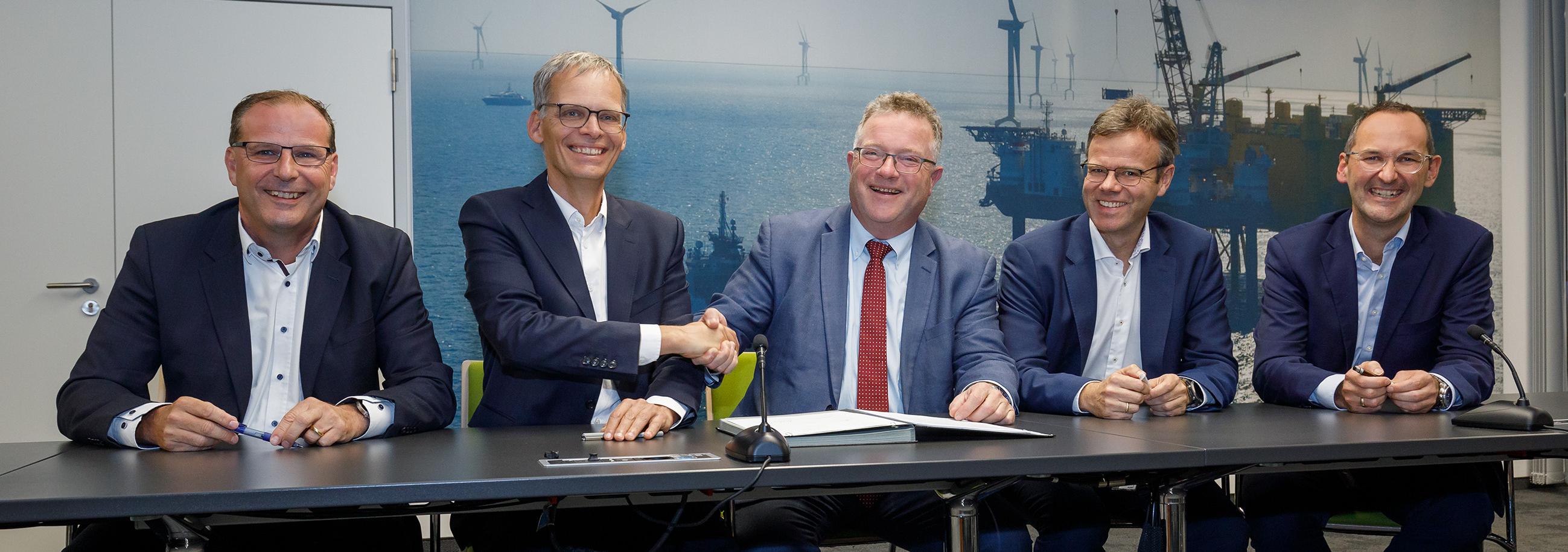
Contributing to TenneT’s carbon neutrality goals to build a sustainable, resilient grid in Germany
Hitachi Energy has announced it will provide the world’s first sulphur hexafluoride (SF6) free 420-kilovolt (kV) gas-insulated switchgear (GIS) technology and a state-of-the-art modular prefabricated grid connection solution at a key node at TenneT’s power grid in Germany, supporting the leading European grid operator to achieve its carbon neutrality goals.
This project covers a major grid connection upgrade which significantly extends the operating life of existing power assets to ensure the longevity and continued efficiency of the existing power infrastructure. The global technology leader will deliver innovative EconiQ™ 420 kV GIS that uses a game-changing technology that eliminates SF6 with reliable and scalable solutions for the lowest carbon footprint.
TenneT is a major transmission system operator in the Netherlands and Germany, supplying power to some 42 million homes and businesses in both countries. The company aims to be a driving force behind the energy transition by investing in eco-efficient technologies to reduce greenhouse gas emissions. As a transmission system operator, TenneT is a key player on the historic path to a safe, reliable and carbon-free energy system.
To support TenneT on its transition to SF6-free solutions, Hitachi Energy will contribute pioneering technologies, unique system integration capabilities, engineering expertise and extensive experience with local grid code requirements to strengthen the grid connection at the 220-megawatt (MW) Erzhausen pumped storage power plant near Hanover. This project uses Building Information Modeling, a consolidated and collaborative digital working method that allows decision-based 3D modeling and improves facility management via a digital twin for the life cycle of the power asset. The entire project will be completed in 2026.
In this project, Hitachi Energy will install three bays of EconiQ 420 kV GIS to enable the transmission of large amounts of electricity over long distances while eliminating significant volumes of SF6. This eco-efficient innovation remains similar in size while being 100 percent as reliable as the conventional GIS solution based on SF6. This installation will effectively avoid the addition of nearly 2,300 kg of SF6, equivalent to removing the CO2 emissions of around 1,1501 passenger vehicles per year.
“We are proud to collaborate with TenneT in their efforts to accelerate the energy transition and strengthen the power infrastructure in Germany,” said Claudio Facchin, Chief Executive Officer of Hitachi Energy. “At Hitachi Energy, we are championing the urgency of the energy transition through innovation and collaboration. Through our modular prefabricated grid connections and EconiQ high-voltage switchgear technology, we are supporting our customers to reduce their carbon footprint and enabling a more sustainable, flexible and secure energy system.”
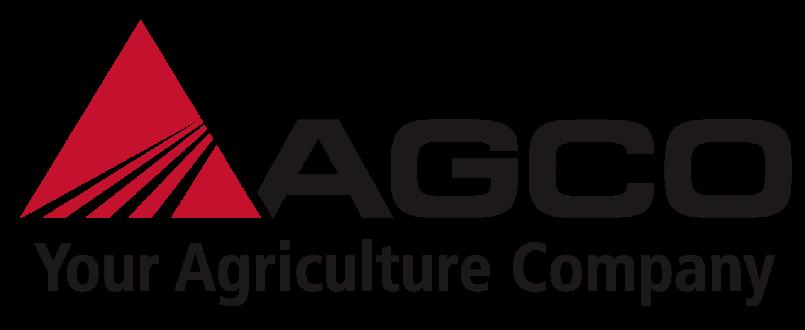
Launch of Africa Agribusiness Qualification presented by AGCO Africa sees 20 participants embark on year-long programme
The AAQ programme seeks to fill a much-needed capacity or skills gap in agribusiness in Africa
Johannesburg, South Africa, 1 September 2021: The AGCO Agriculture Foundation (AAF) skills development initiative, under the banner of ‘Advancement in Agricultural Education’, saw 20 deserving participants commence with the Africa Agribusiness Qualification (AAQ) on 1 September. This took the form of an introductory session at the Gordon Institute of Business Science (GIBS) Johannesburg campus elaborating on the programme content and anticipated outcomes.
Fully-funded by the AAF and implemented through the AGCO Africa Head Office in Johannesburg, the AAQ programme is facilitated by GIBS, together with Harper Adams University in the UK. Furthermore, technical expertise and support are provided by AGCO South Africa and Cerealis Technology Institute in South Africa.
“The AAQ is a well thought-out, one-of-a-kind programme that seeks to fill a much-needed capacity or skills gap in agribusiness in Africa,” comments AAQ Program Manager Dr. Benard Ngwene. It includes an accredited management qualification (NQF4) and provides participants with business, agronomy and technical skills to enable them progress in their careers and/or better manage their businesses. “The AAQ programme will continue to evolve in response to the agri-industry’s training needs,” adds Dr. Ngwene.
About 270 applications were received over a two-week application period. The two-stage selection process saw applicants longlisted based on set criteria. Shortlisted candidates were invited for an online interview, following which the 20 most deserving were chosen. The selection process took into account factors such as group dynamics and learner abilities, so as to ensure all participants will not only benefit from the programme curriculum, but also be able to share their unique experiences through peer-to-peer learning. Participant capabilities will be gauged at an in-depth level during the programme to understand how best to magnify their strengths, while identifying and working on improving any areas of weakness.
This is actually the second AAQ cohort. The initial 24-month programme was hosted in Kenya from March 2018 to March 2020 and was open to participants from all over Africa. To cushion against any uncertainties posed by Covid-19, such as the restriction of movement between countries, the 2021 AAQ call for applications was open to South African residents only. This included other African nationals living in South Africa. The AAQ programme will be implemented through a hybrid model, with 80% online delivery and 20% face-to-face classes.
Dr Ngwene highlights that the AAQ programme aims to: • Cultivate agricultural professionalism and quality leadership. • Enhance knowledge of the African agri-entrepreneurship ecosystem. • Build participants’ capacity to achieve sustainability in food systems and agribusinesses. • Inspire innovations that strengthen Africa’s production systems. • Enhance knowledge of agricultural science, agribusiness and mechanisation. • Enhance the ability of participants to develop and implement projects, initiatives and businesses in various agricultural value chains. • Increase exposure to platforms through which participants can contribute to policy discussions and programmes that aim at strengthening African agriculture. • Produce competent graduates with the capacity to deliver effectively in junior management, technical and specialist roles in agricultural-based companies.
The 2021 AAQ cohort participants will take courses across agronomy, business, sales and marketing, as well as technical training. The programme is structured as six core modules and two electives. The course offering and design was informed by recommendations and consultations with industry players and various stakeholders. All the implementing partners are renowned industry leaders offering quality training and education in their various fields.
“Through the AAQ programme, we hope to empower Africans who have a passion for the agricultural sector, particularly technical and sales representatives, who can serve as trusted partners to African farmers,” says AAF Director Metti Richenhagen.
The AAF is a private foundation committed to ending hunger through sustainable agricultural development. In order to extend the coverage of the AAQ programme and make it accessible to even more young people, AAF and AGCO in Africa are inviting organisations and stakeholders in the agri-food value chains to support, collaborate and contribute to the programme.
“A number of supply-side interventions are required for the South African economy to cope with changes in demand for certain skills, especially with regard to post-secondary education. We believe that the AAQ programme is a stepping stone that will adequately prepare participants to further their education in agriculture or to become entrepreneurs in this field themselves,” says AGCO Managing Director: Africa Dr Dominik Reus.
The AAQ programme will contribute to Africa’s Agenda 2063 and the following Sustainable Development Goals (SDGs) 2030 of the United Nations: Goal 1: No Poverty, Goal 2: Zero Hunger, Goal 4: Quality Education, Goal 5: Gender Equality and Goal 8: Decent Work and Economic Growth.
Zutari renews its focus on mining, petrochemicals and manufacturing under the resources umbrella
24 October 2022: What do mining, petrochemicals and manufacturing have in common? They are all critical market sectors contributing to sustainability and quality of life for millions. Now leading consulting engineering and infrastructure advisory firm Zutari has taken the bold step of combining all three of these sectors under the rubric of resources, headed up by Dr. Eduard Vorster as Managing Director, Resources: Africa.
This forms part of Zutari’s ‘solutionist mindset’ approach to expand the boundaries of engineering in co-creating sustainable infrastructure for the benefit of future generations. “In the past we called this business segment Petrochemicals, Resources and Manufacturing. However, we decided the name was quite cumbersome. It also did not reflect our holistic view that mining, petrochemicals and manufacturing all convert natural resources into end products,” explains Dr. Vorster.
“What differentiates Zutari is that we not only serve a niche portion within the project value chain like some competitors. We offer complete solutions. This is due to the diverse skills we have within the company, which allows us to apply our expertise to create an engineered impact,” says Dr. Vorster.
Mining accounts for the lion’s share of Zutari’s work under the umbrella of resources, with the automotive industry the latest addition under manufacturing. Core skills in mining range from advising on operational excellence to contract management, quantity surveying, contract management, procurement and project management. More specialist skills include bulk materials handling, civils, geotechnical, structural, mechanical, electrical and controls and instrumentation, as well as a unique heavy-haul rail capability.
“What lets us stand head and shoulders above the rest of the industry is the services we provide outside the gates of those mining facilities. For example, we have a deep passion and skill in Environmental, Social and Governance (ESG). Our in-house environmental teams do not focus solely on licencing and compliance but take a broad view of our clients’ sustainability strategies and assist them to sculpt those accordingly,” says Dr. Vorster. Zutari’s strength in the ESG arena relates to energy, water and social impacts. In many instances clients’ business operations impact local communities, which requires a strategic response to socioeconomic imperatives as well as sustainability initiatives such as achieving net zero and decarbonisation. “That much broader approach certainly makes us different,” notes Dr. Vorster. “It is our core strategy in the way we deal with clients.”
Here Zutari adopts a selective approach to clients and projects it can embark on a journey with. “This strategy fits easier with entities with multiple asset bases as it cements our relationship from a C Suite level, where providing strategic advice is paramount, to an operational level where we look at the overall day-to-day running of the operations themselves,” explains Dr. Vorster.
Zutari will consider valuable projects for other entities such as single-asset miners if it aligns with its vision of co-creating an engineered impact. “We have to feel that we can add significant value, or it would not be worthwhile for us or the client to pursue,” says Dr. Vorster. This is where the focus on ESG is so important, as the environmental aspect runs the gamut from dealing with natural resources in a sustainable manner through to working with the host communities, even when the lifespan of the mining operation is over.
“The commonality whether it is petrochemicals or mining or manufacturing is that drive to create more sustainable value by making impact while also doing good business,” says Dr. Vorster. All these industries have core processes where sustainability issues such as water treatment and energy efficiency must be considered. Zutari’s process engineers have the capability to understand the clients’ core businesses. “We apply those skills in the infrastructure space to assist them to do their business more efficiently and sustainably.”
The difference between mining and manufacturing in some instances is that the manufacturing environment is competitive to start with and very efficient, hence it needs its own focus. It employs people differently and procures differently, while the projects differ in terms of size and speed of execution. Mining
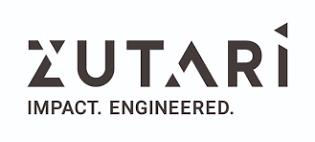
differs in that the size and scope of projects here is so much bigger.
“The thinking required is different. Hence, we like to specialise people in all three industries so they can familiarise themselves with the clients’ needs and deliver quality solutions. Obviously, our learnings from all these industries can be applied cross-sectorally,” says Dr. Vorster.
“The one feeds the other. The commonality is the application of data, which adds value by embracing digital transformation. For Zutari, this means a common approach to a client like Anglo American as well as Coca Cola, for example. It is all about creating effective and speedy solutions by utisiling all the data that is available and applying it for future benefit. This is the mindset we adopt to assist our resources clients as effectively as possible,” concludes Dr. Vorster.
Effective transport systems must be sustainable, resilient and smart
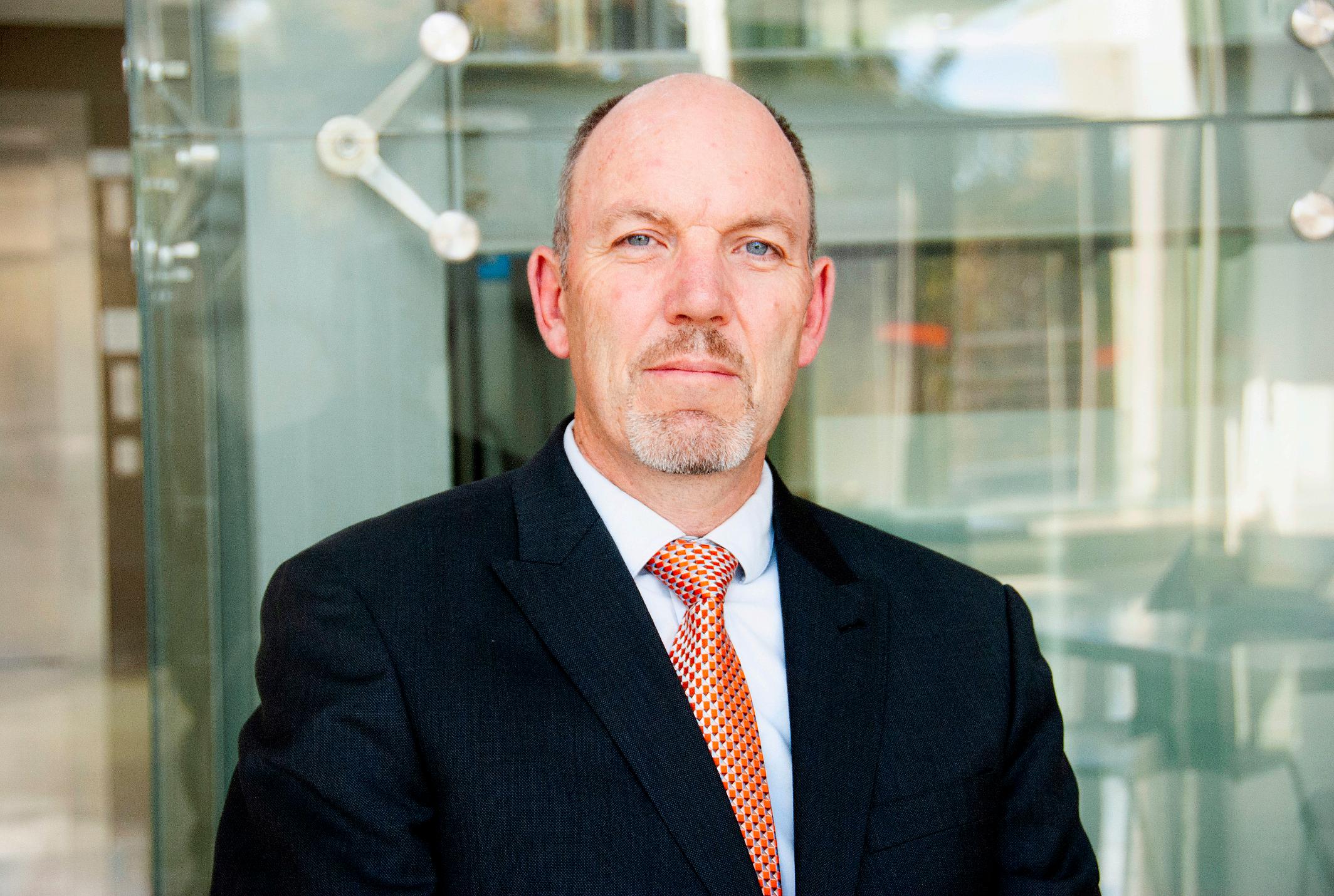
20 October 2022: Globally trusted infrastructure firm AECOM has played a key role in developing a 25-year integrated transport plan for Gauteng, the economic heart of South Africa, in addition to being the lead consultant for the Gautrain project. “You cannot build yourself out of congestion with roads,” comments Chris Britz, Director: Transport, Africa.
“How do we develop the province’s public transport system in an integrated manner to address the transport challenges faced at that stage, which were mainly associated with congestion. Since then, there has been a growing recognition of the transport sector’s contribution to greenhouse gas (GHG) emissions, the main contributor to global warming,” explains Britz.
On average, the transportation sector contributes 8% to 10% of South Africa’s total GHG emissions, a figure that skyrockets to 40% in urban areas. In addition, 60% of road trips undertaken are in private vehicles.
Therefore, sustainable transport systems have several legs: reducing travel, facilitating shifts in travel patterns from private to public and from motorised transport to non-motorised transport, and from road to rail, both in terms of people and freight, although freight poses a bigger challenge as not all cargo can be transported efficiently by rail.
Other factors coming into play are smart cities and intelligent transport solutions to manage transport systems more effectively and the demand for travel, especially in peak periods. The transition to new propulsion technologies, such as electric and potentially green hydrogen propelled vehicles is also essential. The green hydrogen market is viewed as a significant opportunity for economic growth
and job creation in South Africa and some feasibility studies are already under way. “The initial thinking regarding green hydrogen for vehicle propulsion is aimed at freight vehicles,” notes Britz.
Research has identified hydrogen vehicles as an increasingly viable alternative to battery electric vehicles (BEVs). The enhanced range and rapid refuelling compare favourably with BEVs. These positives have led to significant investment by car manufacturers, including Hyundai, Toyota and BMW and should translate into increasingly popular products over the next five years. However, the challenges with green hydrogen remain storage and its transportation. “Its viability as an alternative source of propulsion is likely to increase significantly,” predicts Britz.
As far as e-mobility goes, a major driver as many countries plan to phase out the internal combustion engine soon, Britz argues it presents a major opportunity for South Africa’s automotive manufacturing industry. This is a significant sector of the South African economy as it exports locally made electric vehicles and parts to developed countries and beyond. In the broader picture, Volkswagen Africa’s Business Development Director Serge Kamuhinda has been quoted as stating that Africa has abundant green energy to shape the future of mobility, which stands to become an economic imperative.
While the Just Energy Transition in South Africa relates mainly to the transition from coal-based power generation, Britz argues it is equally applicable to the transport sector. “In the end, the solution to reduce travel is the integration of economic, land use transport and transport development, which represents the biggest mediumto long-term intervention we stand to make in this regard. However, it is not going to happen overnight and will take many years to bear fruit.”
The challenge of delivering effective transport systems in South Africa is compounded by pre-1994 urban planning and conurbation. This concentrated the working class into settlements and areas far removed from the major urban centres. “The starting point is integrating transport, land use and economic development. If that is not done in an optimally integrated manner, then the transport systems by design cannot be effective,” cautions Britz.

Transport systems must also be resilient and capable of withstanding extreme weather events such as the recent catastrophic flooding in KwaZulu-Natal, which dealt a major blow to the economy of
the province and the country. “How do you look at infrastructure from the perspective of resilience? What are your contingency plans to mitigate the economic fallout from such events?” questions Britz.
Another critical factor in the transport sector is job creation and social cohesion and development, all linked to gender and youth
equity and safety and security. “These are issues that cut across many sectors, but which remain highly relevant to the transport sector: On the one hand, in terms of its overall role as an economic driver, and on the other, how the development of effective transport systems can address and alleviate these challenges,” says Britz.
“The traditional approach to transport planning was to only regard the ribbon of black bitumen, but now the trend is to look at the entire road reserve from edge-to-edge to accommodate all the requirements of pedestrians, cyclists, public transport and private and freight vehicles.
“It is essential to look at the full cross-section of the road and then to consider the importance of universal access, especially for people with mobility challenges. Public transport facilities are often perceived as an add-on but play a critical role in designing the urban framework to create a safe and secure environment. This new view on infrastructure design is quite important,” concludes Britz.
Energy-Saving In Water Systems: The Key To Cutting Costs And Achieving Net Zero
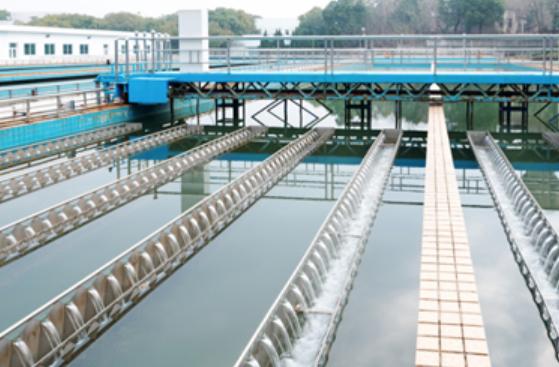
When seeking energy reduction and efficiency, start with your power-hungry pumps and the motors that drive them.
Many of us are lucky enough to be able to turn on a tap and have clean water start flowing. Behind this, and all sorts of other domestic, business, and industrial applications that enable our modern world, utilities must move and process incredible volumes of water. Moving this much water is extremely energy-intensive. Experts estimate that around 4% of total global energy production goes toward water and wastewater processing. That’s approximately equivalent to the total energy use of Australia.
As the global population grows and the trend toward urbanization continues, demands on water and wastewater systems will also grow. This includes subsegments, such as water and wastewater treatment, desalination, and irrigation, all of which require significant amounts of energy.
Fortunately, even seemingly small-percentage efficiency improvements in these vital industries can add up to huge energy savings on a global scale.
Why Are Utilities Seeking Greater Efficiency?
The current approach is not scalable or sustainable in the long term. Meeting demand relies on making water and wastewater infrastructure more energy-efficient. This is in line with the societywide push for sustainability. Legislation such as the EU’s Green Deal, for example, sets minimum efficiency standards for multiple industries, including the water industry. Achieving net zero will require a combined effort from all industries, and efforts to increase efficiency are a valuable contribution. Industrywide adoption of modern, high-efficiency technologies will enable the industry to meet its sustainability commitments and equip it to serve a growing population. Energy accounts for an average of 45% of the total cost of providing water, so utilities that adopt more efficient technologies will be able to maintain profitability.
Here are some actionable steps that utilities can take to make operations more efficient.
Switch To High-Efficiency Motors
Centrifugal pumps, the heart of most operations in the water segment, are driven by electric motors. These motors are responsible for over 90% of electricity use in water facilities.
Often, utilities run motors to the end of their working life. This means that older, less efficient units, such as IE1 and IE2 efficiency class motors, can be kept in place for decades. In the time since they were installed, technology has advanced and motors have become more efficient. Each new IE class motor reduces losses significantly over its predecessor — an IE4 motor, for example, has 20% lower losses than an IE3 motor.
Many utilities are already using ultra-premium IE5 synchronous reluctance motors (SynRMs), wherever feasible, in order to enhance their operations efficiency. Further, the return on investment on such advanced solutions is typically achieved within two years.
Adopt Variable Speed Drives
In many cases, the motors that drive centrifugal pumps and other key equipment do not need to run continually at maximum speed as the demand for water varies during a 24-hour period. Peak use occurs during daytime hours, while demand is lower at night.
To reduce the flow of water, mechanical methods such as valves and throttles are often used. This is similar to a driver applying the brakes in a vehicle to regulate speed while keeping the other foot on the accelerator.
An efficient and well-proven alternative is to use a variable speed drive (VSD) that regulates the speed and torque of the motor – and
thus, the pump output – that equals the flow of water. This flow control with VSDs would reduce considerable energy consumption, as the power consumed by the centrifugal pumps is proportional to the cube of its speed. Moreover, improved flow control with VSDs would ensure the pump operates at its best efficiency point (BEP).
Modern VSDs also include flow-measurement and energy-monitoring functions, enabling facilities to develop a clearer understanding of energy use. Reduced energy use can be calculated in terms of kilowatt-hours, as well as in CO2 emissions eliminated and money saved.
These energy savings are so substantial that the return on investment on VSDs is typically paid off within one to two years. In addition, by ensuring the soft starting and stopping of the system, VSDs help minimize mechanical and electrical stresses and, in turn, extend the life of motors and pumps and improve the plant’s overall productivity.
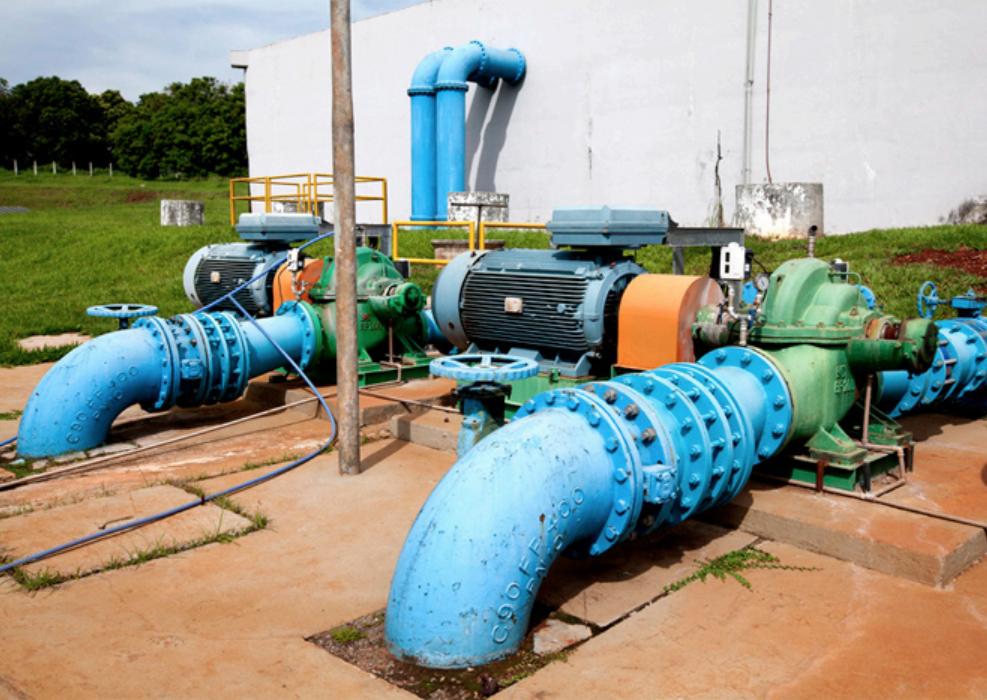
Water pumps at the Saneago site.
Increasing Efficiency The World Over
These energy-efficiency benefits have been demonstrated worldwide. In the Brazilian state of Goiás, the utility Saneago provides drinking water to over 5.7 million people. The company hired a consultant and identified that electricity was consistently one of the company’s top expenditures, and that most of it was going toward powering pumps. To save costs, Saneago set out to replace these motors.
Saneago worked with ABB to install high-efficiency motors and drives throughout its facilities. The changes reduced the utility’s electricity consumption by 25%.
The new water and wastewater drives have intelligent multipump functionality. This means that they can control multiple pumps simultaneously to meet flow and pressure requirements based on real-time data from sensors. They also installed remote condition monitoring tools at four inlet water pumping stations.
Osmar Qualhato Júnior, Saneago’s energy management supervisor, said that by “being a pioneer in utilizing this type of technology in Latin America, we have moved Saneago into the era of digitalization … this has saved us much time, money, and trouble.”
Across the Atlantic in North Rhine-Westphalia, Germany, the Bocholt sewage treatment plant was also looking to cut energy use. It used six pumps at a pumping station, but analysis determined that they could be made more efficient.
The wastewater facility made significant changes to the impeller geometry, which improved both the electrical and mechanical efficiency. As a result, the demand could be met with just four out of six pumps. In addition to reducing the number of motors, the Bocholt facility decided to use high-efficiency SynRMs, which must be paired with VSDs, to further reduce energy usage.
The system can now automatically adjust return sludge flow based on hydraulic load. Any time that the pumps are not operating at full capacity, the facility is using less electricity and saving money. Thanks to this modernization, the Bocholt sewage treatment plant has cut energy consumption by 40%.
Efficiency Makes Business And Environmental Sense
Energy-intensive processes are required throughout water and wastewater facilities. Optimizing these systems for improved energy efficiency saves money and reduces emissions.
An impactful change that facilities can make is adopting modern high-efficiency motors with VSDs. This alone cuts energy use up to 25% or more, taking a major chunk out of a facility’s operating expenditures. The resulting energy savings quickly exceed the cost of the improvements, leaving the facility with lower energy costs and bringing the industry closer to net zero.
By Surendra Muppana
REDUCE – REUSE – RECYCLE
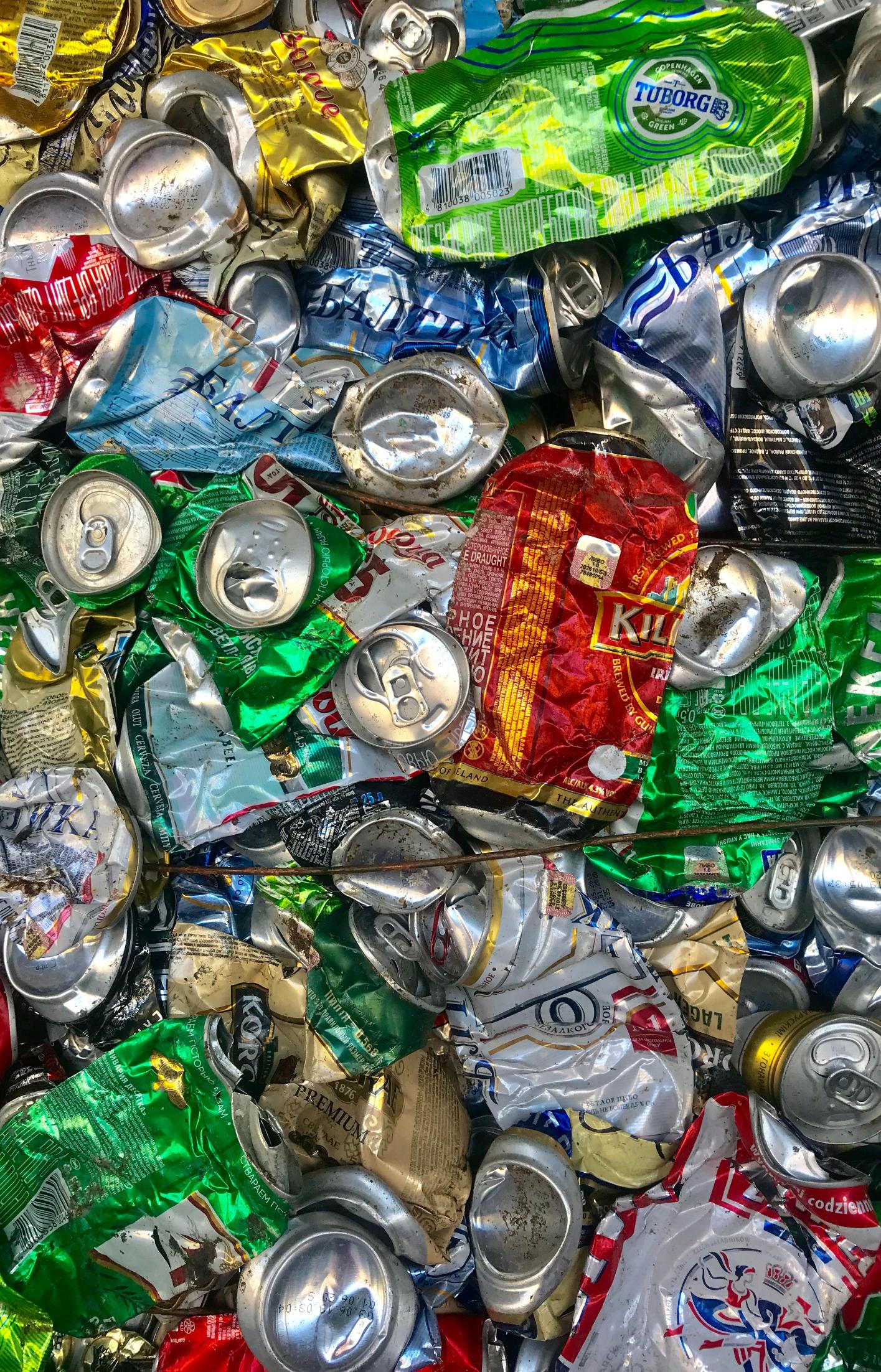
Evgeny karchevsky If you have heard of something called the “waste hierarchy,” then you may be wondering what that means. It is the order of priority of actions to be taken to reduce the amount of waste generated and to improve overall waste management processes and programs. The waste hierarchy consists of 3 R’s as follows:
• Reduce • Reuse • Recycle
Commonly called the “three R’s” of waste management, this waste hierarchy is the guidance suggested for creating a sustainable life. You might be wondering how you can incorporate these principles into your daily life.
They are not that hard to implement. All you need is to bring a small change in your daily lifestyle to reduce waste so that less amount of it goes to the landfill that can reduce your carbon footprint.
It makes a big difference to recycle. It makes a big difference to use recycled products. It makes a big difference to reuse things, to not use the paper cup – and each time you do, that’s a victory. ~ Emily Deschanel
As per Missouri Department of Natural Resources,
“The three R’s – reduce, reuse and recycle – all help to cut down on the amount of waste we throw away. They conserve natural resources, landfill space and energy. Plus, the three R’s save land and money that communities must use to dispose of waste in landfills. Siting a new landfill has become difficult and more expensive due to environmental regula‐tions and public opposition.“
By refusing to buy items that you don’t need, reusing items more than once and disposing the items that are no longer in use at appropriate recycling centers, you can contribute towards a healthier planet.
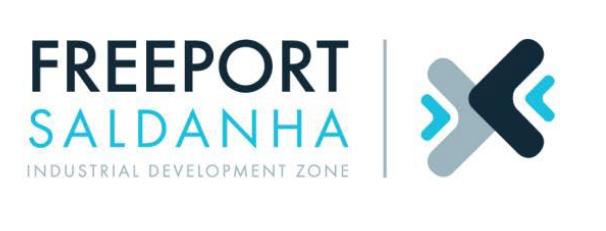
Freeport Saldanha, a Western Cape SEZ, signs MOU with SASOL to establish green hydrogen hub in Saldanha Bay
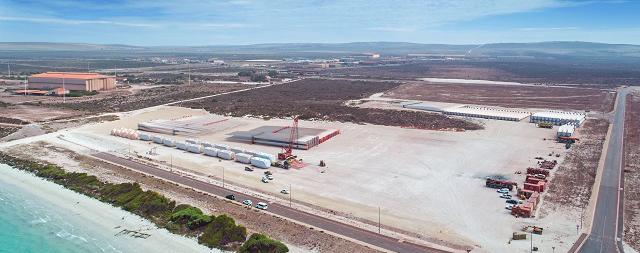
Freeport Saldanha Industrial Development Zone (also known as Saldanha Bay Industrial Development Zone – SBIDZ) has signed a memorandum of understanding (MOU) with Sasol South Africa Limited (Sasol) to facilitate a green hydrogen hub in Saldanha Bay. Ms Kaashifah Beukes, Freeport Saldanha CEO, Alan Winde, Premier of the Western Cape, and Councillor André Truter, Executive Mayor of Saldanha Bay Municipality, were present when the announcement was made at the opening of Africa Energy Week, in Cape Town today, 18th October.
Under the terms of the MOU, the parties agree to collaborate and provide support in establishing a green hydrogen hub that will unlock new economic opportunities in the region and Western Cape, and in doing so, seek to collaborate on the project identification, preparation, pre-feasibility and feasibility assessments with a view of achieving a bankable and implementable project.
The MOU follows on the heels of a joint development agreement (JDA) signed between SASOL and ArcelorMittal South Africa (AMSA) on a project aimed at addressing emissions reduction targets and exploring new value pools through sustainable product streams, including the Saldanha green hydrogen and derivatives project. Two of South Africa's biggest industrial operators, SASOL and AMSA, seek to achieve net zero carbon emissions by 2050.
Beukes said, "Saldanha Bay has a strong strategic fit with Sasol's ambition to be a leading driver and contributor to the development of SA's green hydrogen economy. In addition, Freeport Saldanha is a strategic partner for SASOL and AMSA, adding value to their exploration of new markets by bringing together several stakeholders to drive catalytic investments in sustainable industrialisation and product streams."
AMSA, which is globally committed to ramping up its 'green' steel production, aims to be the first African green flat steel producer and will serve as the anchor customer of the envisaged facility, using green hydrogen to produce direct reduced iron (DRI) will significantly reduce the process carbon footprint.
The area's favourable renewables endowment, a growing local renewables industry, established world-scale industrial companies – like AMSA – and a developed, operational freeport and deep-water port are part of the reasons Saldanha makes a sensible investment location for this new market. “But moreover”, said Beukes, “the Freeport has the backing of the Western Cape Government and the Saldanha Bay Municipality to accelerate break out, inclusive economic growth in the Western Cape and utilise its assets, one being the SEZ, to achieve that aim.
“I welcome the signing of this exciting MoU between Sasol and the Freeport Saldanha Industrial Development Zone, as it lays the foundation for the development of an impressive green hydrogen hub, right here in the Western Cape, which has significant potential to increase energy resilience, attract investment and to create much needed jobs in the province.” Added Minister Mireille Wenger.


THE GREEN AGENDA BRINGING THE INDUSTRY TOGETHER TO A MORE SUSTAINABLE FUTURE


ADVERTISE WITH US:
For advertising and enquiries contact Thandiswa Mbijane: thandi@thegreenagenda.co.za











